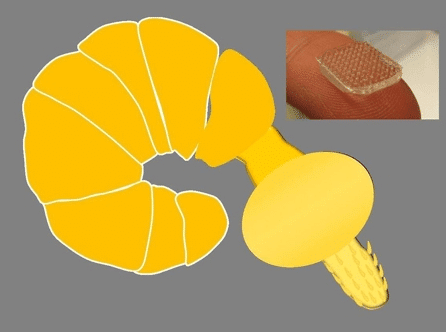A new technique for attaching skin grafts and bandages to wet and soft tissues was developed inspired by a parasitic worm.

By: Yael Halfman Cohen
Protection and closure of wounds and burns is often associated with the use of surgical staples, suturing, or applying adhesives. Sometimes these methods can damage and contaminate the tissue (staples) or cause allergic reactions (glues). The applications are sometimes complicated and time-consuming, especially when trying to attach glue to soft and wet tissue, such as a bleeding wound.
At Brigham and Women's Hospital in Boston, a new solution for sticking to soft, wet tissue has been developed, based on a parasitic worm called Pomphorhynchus laevis, which is found in freshwater crabs and fish. The worm attaches to the host's intestine by pushing microneedles into the intestinal wall. The push is achieved by the swelling of the "trunk" of the worm. This move produces a very strong connection to the tissue.
The worm's trunk is very efficient in penetrating and sticking to the tissue thanks to two parts. One swells in contact with liquid and the other does not. First, the stem enters the tissue with the help of its sharp end - a razor-shaped thorn. So the swelling part, the cactus-like head, reacts to the liquid (the tissue is watery) and swells. The inflatable part ensures a good anchoring in the tissue.
This technology is the basis for various applications. The research team at the hospital used this technique to create a bandage/patch of microneedles, which implants itself in the affected area. When the tips of the microneedles come into contact with the wet tissue, they swell to form a mechanical lock, which reduces damage to the tissue. Another application is a skin graft, which consists of micro-needles whose tips swell upon exposure to fluids, leaving the graft in place. The material is 3 times stronger than connecting with surgical staples! There is also the option of putting medication in the swelling part, thus supporting the healing process. The needles are so delicate that they do not damage the skin, and the process is reversible - the bandage / patch can be removed without damage.
Is the era of bandages or patches that fall off in the shower or due to too much movement over?
